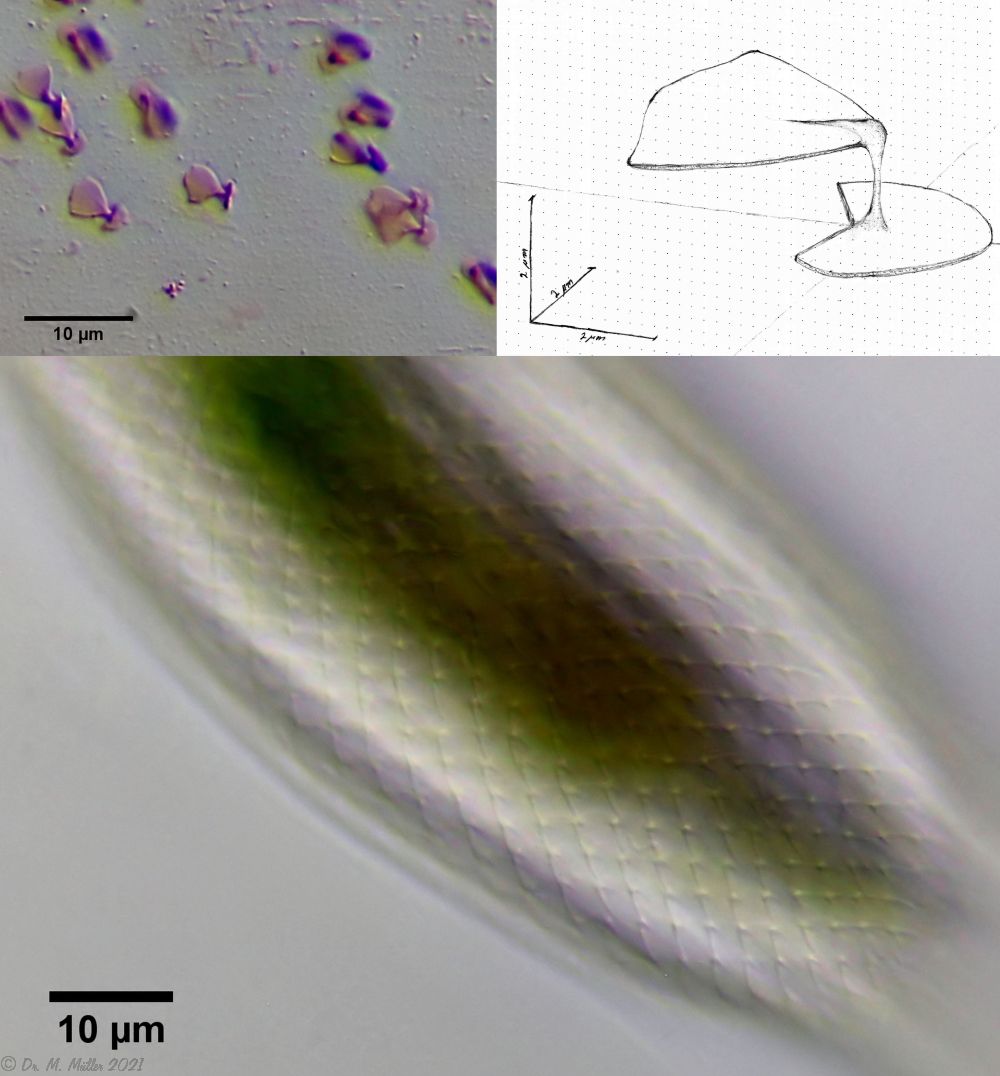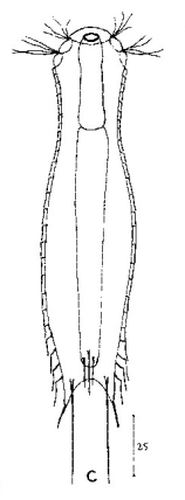Aspidiophorus
- Body bottle shaped
- Furka normal
- Peduncle scales
The genus Aspidiophorus is very easily recognized microscopically by the apparent “double contour” of the body. This double contour is produced by the typical style scales of this genus, which consist of a base plate that sits directly on the cuticle. From this base plate rises a thin peduncle, which carries at its end a - usually larger - un-spined terminal plate:
 typical scales of an Aspidiophorus, here A. squamulosus.
typical scales of an Aspidiophorus, here A. squamulosus.
This results in the typical double outer contour of the animals:

- Body bottle shaped
- Furka normal
- Peduncle scales
23 Species:

Aspidiophorus aster

Aspidiophorus bibulbosus
128 µm - 145 µmDorsal scales: 23 rows of 40-42 small peduncle scales (2-3 µm) each; peduncles 0.5 µm; shape of end plates undescribed
Ventral scales: 8-9 rows of small petiole scales; no terminal plates; neck region naked.
Particularities: small, nimble shape

Aspidiophorus brahmsi

Aspidiophorus herterodermus heterodermus

Aspidiophorus heterodermus levantinensis
136 µm - 171 µmDorsal scales: rhombic petiole scales (3µm long), 41-42 per row, last row in middle with spines (9-14µm), laterally at base of toes a pair of long spines (16-18µm), sometimes with another pair of spines or elongated scales
Ventral scales: Interciliary field with a pair of terminal spines; very many minute keels
Particularities: Kephalion free standing on the edge

Aspidiophorus lilloensis

Aspidiophorus longichaetus
150 µmDorsal scales: 13-14 rows of 24 petiole scales each; long, unkeeled, rhombic terminal plates (6-7µm); posterior 4 terminal plates 10µm, spine-tipped; petiole length 1.2µm; anal region: 3 simple, scaleless spines (18-20µm), protruding from toe; on base of toe, long pair of spines (39µm).
Ventral scales: Ventral intercilliary field naked, 2 terminal scaleless spines (10µm).
Aspidiophorus microlepidotus
250 µm - 300 µmDorsal scales: 50 rows of 120 tiny peduncle scales each; 4 short spines at the posterior end
Particularities: highest number of scales in Aspidiophorus; egg diameter 120µm

Aspidiophorus microsquamatus
142 µm - 172 µmDorsal scales: 40-45 rows, each with 40-45 minute petiole scales; posterior end naked;
Ventral scales: two large terminal plates, few rows of petiole scales, otherwise naked
Particularities: Head set off by three-part necking
